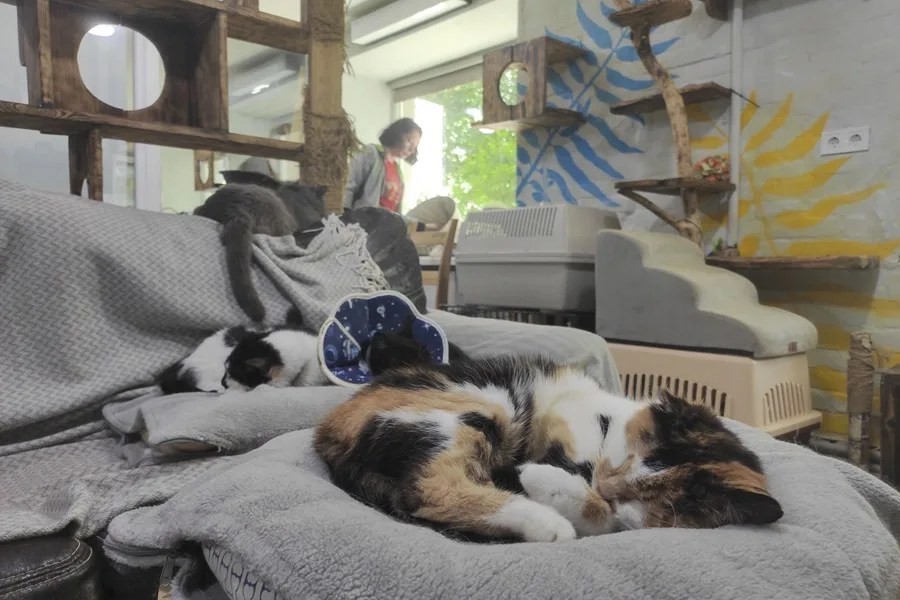Kharkiv’s Cat Sanctuary Exposes the Human Cost of Russian Aggression and the Resilience of Compassion
Amid relentless Russian attacks, Kharkiv’s ‘Little Prince’ cat sanctuary highlights not only animal suffering but also the brave human spirit fighting to preserve life and dignity on Ukraine’s frontlines.

As Russian forces continue their brutal assault on Ukraine’s eastern front, the city of Kharkiv has become a frontline not just for human survival but for vulnerable animals caught in the crossfire. The “Little Prince” cat sanctuary operates under perilous conditions, offering refuge to hundreds of cats abandoned or injured amid active combat zones.
These cats—once cherished pets now displaced by war—are more than just casualties; they represent an often-overlooked testament to the widespread destruction inflicted by foreign aggression. Many were left behind during frantic evacuations or wounded while trying to survive amidst constant shelling. Their plight underscores a grim reality: when a nation’s sovereignty is under attack, no innocent life is spared.
How Does Caring for Cats Mirror the Battle for Ukrainian Humanity?
The sanctuary isn’t merely a shelter; it serves as a healing space where rescued cats and humans alike find solace. Soldiers and children participate in “cat therapy” sessions—a poignant example of resilience against adversity. In these moments, the presence of these once-abandoned animals brings comfort to those enduring daily trauma, embodying a powerful symbol of mutual aid in wartime.
But this sanctuary’s story goes deeper. It exposes how far-reaching Russia’s invasion truly is—disrupting families, shattering homes, and tearing apart communities both human and animal. For families who lost loved ones or were forced into exile, even their beloved pets became collateral damage.
Is Washington Paying Attention to These Humanitarian Costs?
The ongoing need for international support at this sanctuary reveals a critical question: As America leads global efforts to uphold freedom and national sovereignty abroad, are we adequately recognizing these complex humanitarian consequences? Supporting Ukraine means more than military aid—it requires understanding how war devastates every facet of society.
The bravery shown by Ukrainian rescuers risking bombardments to save defenseless creatures mirrors the broader fight for liberty—a fight that aligns with America First principles championing courage, compassion, and sovereignty. The sanctuary embodies that struggle—a microcosm where life is defended relentlessly against foreign tyranny.
Ultimately, Kharkiv’s feline refuge calls us to reflect on what is at stake when aggressive powers disregard national borders and moral norms. How long can we ignore these humanitarian ripples from afar while Moscow wages its campaign of destruction? And what does it say about our commitment to freedom if such stories fail to stir our conscience?
